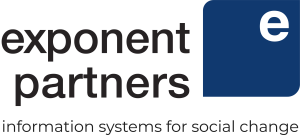Case Study: Pace Center for Girls
From Point Solution to Platform
The Pace Center for Girls (Pace) mission is to provide girls and young women an opportunity for a better future through education, counseling, training, and advocacy. Pace applies a set of gender-responsive, trauma-informed and strength-based prevention and early intervention practices, including academic and social services, with the purpose of ensuring girls’ future opportunities and success. With a statewide network of 21 Pace Centers in Florida and supporting a system of care for girls in Georgia, Pace annually helps more than 3,000 girls, ages 11-18, get back on track to graduate from high school.

Decreased amount of time to create reports: Reports that took 2 to 3 hours to create now produced in less than 30 minutes
Streamlined processes: Ability to document relevant metrics aligning social and academic services
Improved data accuracy: Easier to quickly identify and rectify data issues, which might have have gone unnoticed with the legacy solutions
“We wanted to have our program model and processes drive the system design, rather than having software dictate our program and processes. After evaluating several options, we realized that Exponent Partners offered a flexible solution that would meet our case management needs, as well as our academic requirements.”– Lymari Benitez, Director of Program Evaluation, Pace Center for Girls

Situation
Needed a scalable solution to accommodate the organization’s growth
Pace’s growth was pushing the limits of the non-profit’s legacy system. With 21 day programs (four of which had opened during the last five years), 12 outreach programs (11 of which had opened in the past three years in Florida and one in Georgia), Pace needed the ability to easily integrate data across centers to gain an organization-wide view of programs and outcomes. “In our previous system, each of our centers was a separate entity,” said Lymari Benitez, Director of Program Evaluation at Pace. “We had to go through many steps to pull together data across all our centers for predictive and in-depth analyses.” Forecasting more growth in the future, Pace needed a solution with a flexible architecture that could keep data f rom each center separate, yet also provide the ability for management to easily aggregate information as needed.
Limited ability to track important metrics impacted reporting
Pace’s legacy system allowed the organization to document details related to social services and counseling sessions. However, most of the data in the system was qualitative. According to Lymari, “The system was designed as a big journal. We were capturing important information, but not in a way that we could translate to good measures or behavioral progress.” Similarly, goal completion was difficult to track. The legacy system also made it difficult to capture key metrics related to academic services. It was difficult to produce reports about grades and school credits. Managers were creating their own spreadsheets outside of the system to track academic information and had to do manual counts in order to aggregate the data needed for reporting.
Shortcomings related to data collection and accuracy
“One of our biggest issues was the ease of data collection and data accuracy,” stated Lymari. “Sometimes we would make changes to demographic information in our legacy system, but had to wait 24 hours for those changes to be reflected in a report.” Such a delay was problematic when Pace needed real-time data.Batch uploads were also a source of f rustration for Pace. According to Lymari, “We need to do a lot of batch uploads, especially for attendance. These uploads were painful because they not only took a long time to complete, but they were usually full of errors and error messages.” As a result, staff would have to manually and painstakingly review the imported data to verify its accuracy, and then spend time making corrections.
“The Exponent Case Management (ECM) and the Salesforce platform integration will play a key role in facilitating our long-term growth. Thanks to their architecture we have the flexibility needed to adapt and support our ongoing expansion of Pace’s centers and programs without compromising our program model.”– Lymari Benitez, Director of Program Evaluation, Pace Center for Girls
Solution
Pace worked with an external consultant to conduct a technical assessment of their legacy system, and to identify a replacement solution that would better meet the organization’s immediate and long-term needs. According to Lymari, “We were looking for a cloud-based solution that would allow us to do case management, while also capturing academics. It was also important for the solution to be easy to learn as we would need to train staff across our many centers to be self-sufficient.”
Pace selected Exponent Case Management (ECM) and Salesforce for the ability to include social and academic services, allowing the organization to move away f rom a standalone point solution and spreadsheets to a fully integrated platform. This combination provided Pace with the flexibility to customize objects to track academic information. “The alignment between social services and academics was essential for our program model and the integration of ECM and Salesforce provided the flexibility needed to capture and access all our key data in one place,” explained Lymari.
After selecting and working with Exponent Partners to configure ECM and Salesforce to meet Pace’s needs, the organization did a phased rollout of the platform. “Change management was a priority for us as we were deploying the solution to 375 users and we wanted to make sure we maximized buy-in without overwhelming our administrators,” said Lymari. This strategic approach has been instrumental in the successful adoption of the new platform.

Results
Scalable and flexible solution
“The architecture of the platform is one of the biggest advantages offered by ECM and Salesforce, as it allows us to easily make changes when we add a center or program, or create a custom object to capture a Pace-specific service like our Growth and Change System,” explained Lymari. “We now feel confident that our technology will scale with our organization, facilitating the future growth of our centers and programs, while enabling us to focus on the girls.” The ability to adapt the solution to reflect Pace’s language has been greatly appreciated and has further boosted user adoption. According to Lymari, “ECM and Salesforce offer us considerable flexibility, including the ability to integrate our own language into the system, which makes it easier for all staff to use the platform.”The ability to streamline some processes and ultimately automate others is also a significant step forward for Pace.
Track and report on metrics for individual centers, and aggregate data across centers reporting
ECM is helping Pace document key metrics across its 21 centers and 13 outreach programs. Pace now finds it easy to track key metrics and compare the results with plans and projections, both at the center-level and the organization-level.Moreover, the system structure allows for easy documentation as participant information is connected. “Everything is centralized into what we call the case record,” explained Lymari. This provides Pace with several advantages. “Instead of having to access multiple places to document information, participants’ information is organized in one place providing a holistic view of our girls. In addition, because key information is located together, it is easy to create a report type, select indicators, and develop a report that has the information we are seeking.”
Less time required to create reports
With ECM and Salesforce housing all of Pace’s Centers’ data in one place, the number of flat file reports required has decreased significantly, as has the amount of time spent creating reports. “I used to need two to three hours to run 21 reports, followed by SPSS or Excel to merge all the data into one place,” explained Lymari. “Now, all the data is available in a single report that takes me less than 30 minutes to create.”
Easier to collect data, plus enhanced data accuracy
“With our legacy system, batch uploads were time consuming as we had to go through the data to identify errors,” said Lymari. “Now, the batch upload is completed in two minutes, the changes are reflected instantly, and any errors are flagged and can be immediately corrected.” Administrators can also quickly identify if a problem with data is a center issue or a training issue, and plan accordingly to address the root cause.
Improved collaboration among teams and widespread use of the platform
ECM has significantly improved collaboration between social services staff and academic staff. This benefit is a direct result of members from both teams working closely together on important processes that are facilitated by the platform. According to Lymari, “Team members have clear motivation and specific goals for working even more closely together to benefit our girls.”The usability of the system has also been valuable. “ECM and Salesforce are so user-friendly that more people understand the system and are using it in their daily activities,” said Lymari. With 375 users on the platform, it is also helpful that more than one person can document information in the system at one time.
Facilitating a shift from accounting and performance management to research and evaluation
Looking forward, Pace expects ECM to allow the organization to move beyond the measures that are being tracked every month and shift towards research and evaluation. This change will allow the organization to answer more important questions about how the programs are operating, integrating information across departments.
Download a printer-friendly PDF version of this client success story.
Photos courtesy of Pace Center for Girls


